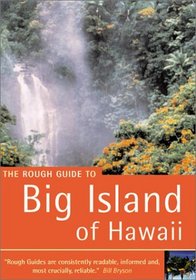Search -
The Rough Guide to Big Island of Hawaii
The Rough Guide to Big Island of Hawaii
Author:
INTRODUCTION The Hawaiian islands are the weatherbeaten summits of a chain of submarine volcanoes, poking from the Pacific more than two thousand miles off the west coast of America. Only on the Big Island of Hawaii are those volcanoes still active and continuing to shape one of the most remarkable places on earth. Nowhere else in the state, le... more »
Author:
INTRODUCTION The Hawaiian islands are the weatherbeaten summits of a chain of submarine volcanoes, poking from the Pacific more than two thousand miles off the west coast of America. Only on the Big Island of Hawaii are those volcanoes still active and continuing to shape one of the most remarkable places on earth. Nowhere else in the state, le... more »
ISBN-13: 9781858288505
ISBN-10: 1858288509
Publication Date: 1/7/2002
Pages: 315
Rating: 2
ISBN-10: 1858288509
Publication Date: 1/7/2002
Pages: 315
Rating: 2
3.3 stars, based on 2 ratings
Publisher: Rough Guides Limited
Book Type: Paperback
Members Wishing: 0
Reviews: Amazon | Write a Review
Book Type: Paperback
Members Wishing: 0
Reviews: Amazon | Write a Review
Genres:
- Travel >> Guidebook Series >> Rough Guide
- Travel >> United States >> Regions >> West >> Pacific
- Travel >> United States >> States >> Hawaii >> General
- Travel >> United States >> States >> Hawaii >> Big Island




